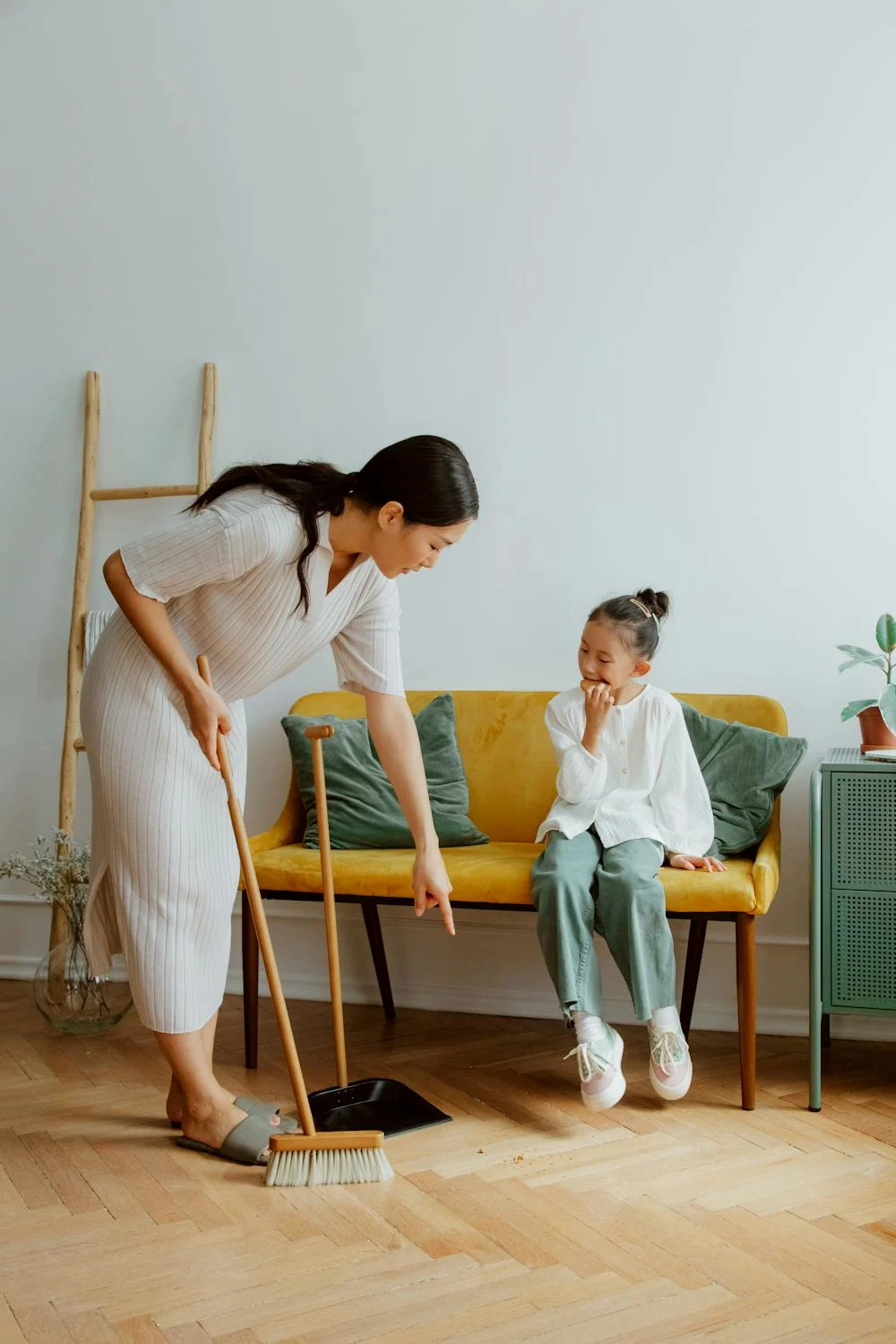
Home & Decor Blogs: DIY, Interior Design & Lifestyle Ideas
How to Keep Your Home Clean With Kids

Keeping a house spick and span with kids around can feel like trying to empty the ocean with a spoon. As soon as you tidy one room, a tidal wave is about to crash in the next. Fortunately, all it takes is a few clever systems and a playful attitude to stay on top of the chaos. These 10 tips will help you carve out calm amidst the whirlwind of toys, snacks and mystery messes.
1. Embrace the Season
Recognize that your home reflects your season of life. Your pristine, magazine-worthy home may return around the time the youngest leaves the house. For now, embrace that you’re in the season of sticky fingers and toy avalanches.
Rather than fighting that reality, acknowledge it by adjusting your expectations. Aim for “clean enough” and “tidy enough” instead of perfection. Your home is lived-in, and that’s exactly how it should be.
2. Kid-Proof Your Spaces

Childproofing can make cleaning easier and help keep stains away. Viable ideas include:
- Use washable paint for walls and surfaces.
- Opt for patterned rugs that easily conceal stains.
- Choose furniture upholstered with sturdy, washable fabrics.
- Consider easy-to-clean, toxin-free flooring that’s kid-friendly and low-maintenance.
3. Create Clutter Catchers
Strategically place baskets or bins around your home to corral items people need to return to their proper places. Place a basket at the bottom of the stairs for items that need to go up, a bin in the living room for toys that belong elsewhere, or a box by the front door for items that need to leave the house.
These clutter catchers contain the mess and make transporting multiple items to where they belong in one trip easier.
4. Teach Kids Age-Appropriate Chores
When today’s parents look back, roughly 82% recall doing chores regularly as kids. However, only 28% notice their children following suit. Most caregivers grew up with household responsibilities but struggle to pass that habit on.
This chore gap is a missed opportunity to teach kids valuable life skills.
Plus, doing all of the household tasks alone creates more work for yourself.
The key is starting early and making chores a normal part of family life, not a punishment.
Use chore charts, stickers or apps to track responsibilities, and remember to recognize effort and improvement.
Even toddlers can help sort laundry by color or put plastic dishes in a low drawer.
Kindergarteners can help feed pets or set the table. Older school-age kids can clean their rooms, take out trash or help with meal prep.
Teens can do laundry, clean bathrooms and contribute in more significant ways.
5. Introduce the One In, One Out Rule
Kids’ stuff has a magical way of multiplying. To combat this, establish a “one in, one out” policy. For instance, when a new toy comes in, kids should choose an old one to donate. This keeps clutter at bay while teaching young ones about generosity and the value of possessions. This rule will work wonders during holidays and birthdays when the influx of new items is often overwhelming.
6. Bring in the Tiny Tools
Let children feel like real helpers by giving them scaled-down supplies. Fill a small caddy with child-safe spray bottles, colorful microfiber cloths, a mini broom, a kiddie-sized apron and gloves. You can add more things as they get older or grow more adept at cleaning around the home.
When kids have tools sized for them, spills and crumbs become opportunities to practice responsibility. Child-friendly cleaning equipment and supplies are also safe for them to use.
7. Turn Cleaning Into Play

Kids are far more motivated when chores seem fun. So, turn on the music and have a five-minute dance-and-clean party. Use a timer and see who can pick up the most toys before the timer’s ding. Create a scavenger hunt for all the toys, put them away and go on cleaning “missions,” complete with silly voices — “Agent Mom needs all LEGO pieces to report to base ASAP.”
The more you can frame tidying as something fun rather than a dreaded chore, the less resistance you’ll face. Laughter also makes chores feel less like work and more like family bonding time for parents.
8. Follow a Cleaning Routine
Rather than letting messes pile up, carve out a few minutes each day for a quick tidy-up. Tackle tasks that need daily attention. For instance, wipe the counters, tackle a load of laundry, do the dishes or sweep a high-traffic area. You may find that setting a consistent time during the day to do these targeted chores helps the habit stick and prevents clutter from overwhelming you and your space.
Go the extra mile and pick one day each week or every other week for everyone to team up on deep cleaning.
Delegate tasks depending on age and focus on areas that don’t receive daily love.
Scrub and disinfect tubs and sinks, clean windows, vacuum, dust, sort mail, and restock supplies like hand soap and tissues.
Conquering the Chaos
Someday, you’ll have all the time in the world to keep your home spotless. When that happens, you might just find yourself missing the beautiful chaos of these days. Until then, these strategies should help you maintain some semblance of order in the home, even if it’s occasionally adorned with strewn-about toys, crayons and laundry.
FAQs
Q1: How can I keep my home clean when my kids are constantly making messes?
Answer: Start by accepting that perfection isn’t the goal—consistency is. Set realistic cleaning routines that include daily quick clean-ups and weekly deep cleans. Use bins or baskets in every room for fast toy pickup, and get kids involved by making clean-up a fun, age-appropriate task. The key is to clean as you go and not let the clutter build up.
Q2: What are some easy cleaning routines that work for busy parents?
Answer: Use a “clean as you go” method. Wipe spills immediately, vacuum high-traffic areas daily, and set a timer for 10-minute evening tidy-ups. Assign each day to one cleaning task—like Mondays for laundry, Tuesdays for dusting. Keep cleaning supplies handy in each major area so you’re not constantly running around.
Q3: How do I get my kids to help with cleaning without it turning into a battle?
Answer: Turn chores into games or challenges, like “who can pick up the most toys in 2 minutes?” Use charts with stickers or small rewards for motivation. Teach them one task at a time and praise their efforts, not just results. Kids mimic what they see—if they see you cleaning with a positive attitude, they’ll follow.
Q4: What are the best cleaning tools for homes with children?
Answer: Opt for non-toxic, kid-safe cleaners and tools like microfiber cloths, handheld vacuums, and mop systems that are lightweight and easy to use. Storage bins with labels and stackable toy organizers can help contain messes. A cordless vacuum is a lifesaver when you need quick cleanups between snacks and spills.
Q5: How do I manage clutter from toys, clothes, and school stuff?
Answer: Use a one-in, one-out policy—every new toy or outfit means donating or storing an old one. Have designated drop zones for school bags and shoes near the entrance. Rotate toys monthly to reduce overwhelm and make playtime feel fresh. Bins, cubbies, and labeled drawers can simplify sorting and storage.
